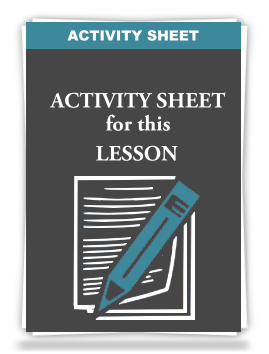- Home
- How I Help
- Seven Steps to Improved Connection with the Other Person, Through Improved Listening Skills! [ARTICLE]
Seven Steps to Improved Connection with the Other Person, Through Improved Listening Skills!
It is said that the greatest ability a person can have (and even more true for a sales professional) is the ability to listen to another person and do so without interrupting.
As sales professional’s the art of listening to the verbal and nonverbal language of the other person, is critical in establishing rapport, engaging in needs analysis, and clearly determining if you have a solution for their immediate, intermediate, and long term needs. It is difficult to listen to another person if ones’ focus is not on that other person, if there are distraction, hidden agendas, frustrations, a desire to get through with them and move onto another person or task.
Listening takes conscious effort. Realize that effective PRESENTATIONS and increase sales effectiveness, comes from one’s ability to clearly listen to the other person. Through listening one can learn:
- How the other party thinks (logically or emotionally; If you have had prior experience with personality/social style typing through instruments like: Myers- Briggs, DISC, BANK, Hogan, Strength-Finders, Colors, etc.), listen for these clues and blend your approach to them and sell from their perspective and not yours
- Immediate needs focused, are they facing a time constraint need that will influence their decision process
- Future needs focused, are they facing on-going and long term time constraint needs that will influence their decision process right now as well
- Whether they are influenced or have any past experiences with you, your firm, other sales professionals, etc.
- Recognize common ground between the two of you
- And, much more…
There are a lot of ways to improve ones’ listening ability and the following acronym will serve as model to guide a sales professional on differing techniques to deploy to reduce their own talk time, interruption tendency and improve their information intake ability – listening. Consider these seven fundamental ways to engage and listen more effectively:
- L = look and listen, see if non-verbal signals are consistent with verbal signals.
- I = implied interest, by showing that you are genuinely interested in the other party they will become more comfortable with you, more relaxed and thus more engaging.
- S = summarize key points often, to solicit feedback to ensure that you are listening correctly to them and conversely that points you make have value to the other person.
- T = territorial sensitivity to the other person in respect to their space, knowledge, beliefs, age, race, sex, profession, station in life. Violation of any of these territories may cause the other person to tune you out. Likewise, if the other person in their dialogue violates on of your territories you may want to stop listening, force yourself to listen now by knowing what it is that has offended you and set that temporarily to the side and focus on more listening if appropriate.
- E = empathetic position must be taken by the sales professional to what the other person says. Empathy implies that you understand, it doesn’t imply that you agree with them or that they are right or wrong!
- N = names, notes and nonverbal signals, are three ways to use letter “N” as a listening technology tool. Using people names in the conversation and in correspondence serves as a magnet to pull them and keep the dialogue personal; Note-taking is a powerful tool for keeping control over one’s mouth – if you have a tendency to talk too much or interrupt others, then start carrying a note pad and when the other person talks you take notes. It is physically impossible to write coherent notes and talk to someone at the same time coherently. If you have a data base or customer relationship management system, capture detailed notes in the notes field section for your future reference and that of a colleague, should anyone else need to assist you with an account; And, watching the other person’s non- verbal signals to ensure that they are consistent with their verbal signals is powerful.
- S = smile (not smirk) makes people warm up to you.
Far too many sells are lost because the sales professional talked too much and far too many sales are not made because sales professionals did not listen effectively enough.
By effective listening you can identify how many decision makers may be involved directly or behind the scenes indirectly in actually making the decision to accept your offer. This is critical to making the sell, make sure you have done so and have the means to speak to everyone when this occurs. Through listening you can identify what the dominant buying decisions of the other person(s) will be and the reasons behind their decisions – the why factors. These are among many critical factors necessary to making an effective presentation to the other party, whether singular or plural.
Listen for the dominant need or pain-point that the other person shares or reveals through effective conversational engagement and listening. Then when you present your suggested solution, start by making the case with a single dominant solution that you have for their consideration. Make the point through effective listening and using or replaying back to them their concerns, needs and words wrapped around your number one most powerful solution to them. Make the sale by presenting to them the number one deliverable they can gain by accepting your offer, make that sale, then after the deal is done, you can go back and reinforce their decision with any additional value points, as additional gains as sells after the sale!
Too much of a response and too many solutions can overwhelm the mind, and most often when the mind becomes overwhelmed it shuts down and says ‘no’!
Remember, listening is both art, science and self-control. From listening comes the path to interactive success with them both now, and with additional follow-up reinforcement to meet and sustain your relationship by fulfilling their on-going intermediate and long- term needs. Through listening if what you are doing is simple ‘transactional’ selling you can make more transactional turns. Here you can quickly identify the up-selling, cross- selling, and when appropriate to keep and make the sale what the down-selling opportunities may be.
However, if what you are selling and working to achieve is a ‘relationship selling’ connection, then through listening you can uncover the building blocks of connectivity for a long-term relationship, and this brings you greater selling opportunities now, in the future and a great advocate that can become your lead generating referral and source of market information as to what is happening with the competition and increased prospect identification opportunities, and more!





